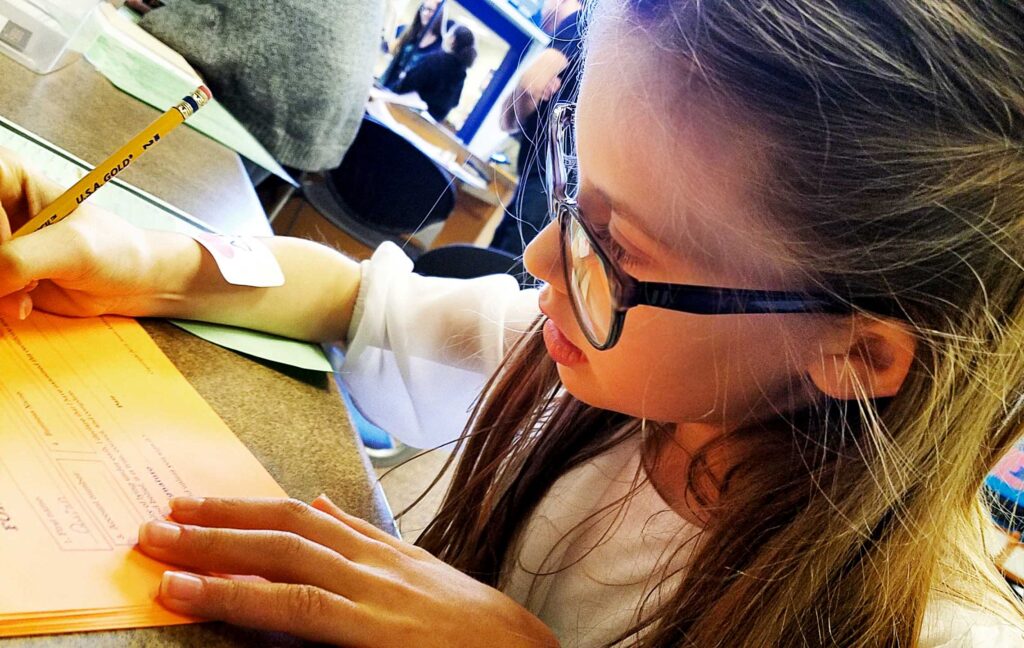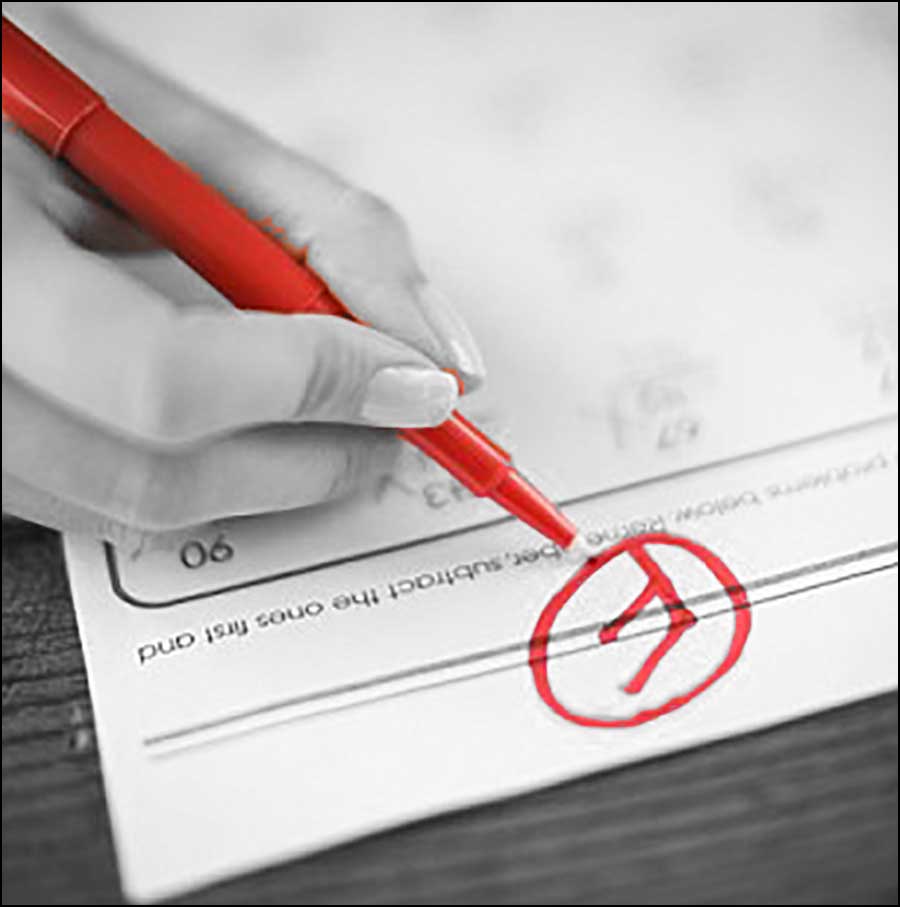Can ADHD/ADD be treated without Drugs?
ADHD in children
ADHD (Attention Deficit Hyperactivity Disorder), also called ADD (Attention Deficit Disorder) or sometimes a combination of both, can make certain activities difficult for those struggling from it. These activities include learning or completing large amounts of work.
ADHD/ADD behaviors in students are becoming more and more observable in the classroom each year. This is true whether it is in a virtual classroom or in a physical classroom.
Throughout my teaching years, I have helped counsel many parents struggling to find a solution to their children’s lack of focus at school or to their difficulty in completing learning tasks at home and household chores.
What is the first response most parents give when having this difficult conversation? It is usually, “I don’t want to medicate my child if I don’t have to.” Current research shows there are things you can do at home to reduce these symptoms without necessarily turning to prescription medication.
What are the symptoms of ADHD?
According the the CDC there is specific criteria for ADHD/ADD:
Inattention. Symptoms of inattention have been present for at least 6 months and they are inappropriate for developmental level. Examples of this include:
- Often fails to give close attention to details or makes careless mistakes in schoolwork or with other activities.
- Often has trouble holding attention on tasks or play activities.
- Often does not seem to listen when spoken to directly.
- Often does not follow through on instructions and fails to finish schoolwork or chores (e.g., loses focus, side-tracked).
- Often has trouble organizing tasks and activities.
- Often avoids, dislikes, or is reluctant to do tasks that require mental effort over a long period of time (such as schoolwork or homework).
- Often loses things necessary for tasks and activities (school materials, pencils, books, eyeglasses, mobile telephones).
- Is often easily distracted
- Is often forgetful in daily activities.
Hyperactivity and Impulsivity: Symptoms of hyperactivity-impulsivity have been present for at least 6 months to an extent disruptive and inappropriate for the person’s developmental level. This includes:
- Often fidgets with or taps hands or feet, or squirms in seat.
- Often leaves seat in situations when remaining seated is expected.
- Often runs about or climbs in situations where it is not appropriate.
- Often unable to play or take part in leisure activities quietly.
- Is often “on the go” acting as if “driven by a motor”.
- Often talks excessively.
- Often blurts out an answer before a question has been completed.
- Often has trouble waiting their turn.
- Often interrupts or intrudes on others (butts into conversations or games)
In addition, the following conditions must be met:
- Several inattentive or hyperactive-impulsive symptoms were present before age 12 years.
- Several symptoms are present in two or more settings, (such as at home and school; with friends or relatives; in other activities).
- There is clear evidence the symptoms interfere with, or reduce the quality of, social or school function.
- The symptoms are not better explained by another disorder (such as a mood disorder, anxiety disorder, dissociative disorder, or a personality disorder).
What causes ADHD/ADD?
ADHD/ADD numbers are rising, and the world is trying to understand why. The United States has significantly more instances of ADHD than other developed countries. The number of children diagnosed with ADHD/ADD in the United States has reached more than 10%, a significant increase during the past 20 years, according to new research.
Over the last 20 years, the rate of ADHD/ADD diagnosis doubled in girls, although it was still much lower than in boys.
The Washington Post
Often the first suggestion to parents after a diagnosis of ADHD/ADD is a prescription for a medication. Medication can be the right choice for some children, but it is equally important to be aware of alternative options that can be tried. These could spare the child a lifetime of prescription drugs.
Symptoms could be due to anxiety, poor sleep quality, vision problems, a learning disability, or other conditions some not yet known. ADHD/ADD in children can only be diagnosed by pediatricians, psychiatrists and child psychologists.
What you can do at home to help manage your child’s ADHD/ADD
Parents and Teachers should work together in helping a child learn to recognize and adjust his or her behavior when struggling with ADHD/ADD symptoms. Here are some suggestions for both home and school to help manage your child’s ADHD/ADD without relying on medication.
Establish a clear bedtime (and be consistent).
ADD/ADHD is linked with a variety of sleep problems. For example, one recent study found that children with ADD/ADHD had higher rates of daytime sleepiness than children without ADD/ADHD. Another study found that 50% of children with ADD/ADHD had signs of sleep disordered breathing, compared to only 22% of children without ADD/ADHD. Talk to your pediatrician if you suspect your child may have a sleep problem.
It is recommended that school-aged children 6-13 years old get 9 to 11 hours of sleep each night. Do everything you can to get your child to sleep earlier and to sleep more soundly. Everyone does better after a good night’s rest! Unfortunately, snoring siblings, too much light, going to bed too late, a messy or non-restful sleep environment, over-exhaustion, too much screen time too close to bed, diet and exercise – some research suggests that exercise may be the strongest positive influence – all affect your child’s ability to sleep.
Establish structure (and be consistent).
Children with ADHD/ADD tend to do well with structure and routine. You can help them stay focused and organized by coming up with mini rituals for daily activities.
Try picking out clothes the night before and having school supplies gathered in a specific spot to cut down on stress in the morning. Leading by example is important, so do your best to stay neat and organized around the house (and in the classroom!) to help your child learn that everything has a time and place.
Set clear expectations and rules.
Children with ADHD/ADD respond well to clearly defined (and consistent) systems of rewards and consequences. A way to help everyone stay accountable is to make a list of rules, rewards, and natural consequences and hang it somewhere for the whole family to see.
Too often praise can get overlooked. Your child is probably used to being told to change his or her behavior (from teachers, coaches, as well as at home), so it’s important to acknowledge when they’re doing something right! A reward can be as simple as a family walk around the neighborhood or a bike ride trip to the park.
Get your child moving!
It’s a good idea to get most children involved with some sort of extra-curricular activity that gets them moving, but it’s especially effective for kids with ADHD/ADD. Organized activities (like sports, dance, yoga) encourage kids to focus their movements, which helps improve concentration.
Better concentration can decrease anxiety and depression, too. On top of all that, sports are a great way to burn off excess energy, which can help your child’s sleep to improve. Keep in mind that some sports are better for ADHD than others. If the activity has a lot of idle time (like waiting to take turns), it might be less effective than an activity with constant motion.
Of course, in addition to organized activities, make time in every day for unstructured, unsupervised creative play. Both are necessary to your child’s development. In the day and age of screen time and over-scheduling, children are losing the opportunity for critical unstructured play. Find a safe environment where your child can explore and reflect without constant adult supervision.
No one needs to be entertained every moment of every day!
Help your child eat right.
Regular, nutritious meals are beneficial for everyone, but children with ADD/ADHD tend to struggle when it comes to mealtime. Without structure, they’ll often be too distracted by other things to remember to eat, and when they finally do, they’ll binge on whatever is around. Diet does not cause ADD/ADHD, however, nutrition can affect mood and mental state in general. So it’s important to set specific times to eat, in addition to making sure those meals and snacks are nutritious.
Don’t skip breakfast in the morning before school! Eating breakfast has been shown to improve children’s behavior at school, and poor eating patterns can harm growth and development. Put simply, a good quality breakfast helps provide children with the energy they need for the school day.
Consider Meditation and Mindfulness techniques.
A new line of research is exploring how mindfulness may help manage the symptoms of ADD/ADHD. Mindfulness is learning how to sharpen focus, raise awareness, and practice self-control through breathing and meditation.
One small study found that when both children and their parents completed an 8-week mindfulness-training program, children exhibited fewer ADD/ADHD symptoms. Additionally, their parents felt less of the stress that typically comes with their role.
Don’t forget to take care of yourself!
This might just be the most important tip. Getting stressed out from time to time is just part of the territory when it comes to parenting. When you’re well rested, calm and focused, you’re more likely to cut through the distractions your child is dealing with. It’s important that you figure out ways to manage your own stress. Find something you love and make it a priority in your daily routine.
If you don’t have much time available in your day for self-care, find small things to add to your routine: Reading silently together as a family for 30 minutes, a short bath, 5 minutes of meditation (free apps are available on your phone), stretching at the end of the day, 10 minutes of journalling, a 15 minute phone call to a good friend, etc. Without self-care it becomes very difficult to care for others!
Navigating a course for a child with ADHD/ADD can be complex. What works for one child may not work for another. The key is to find lifestyle changes that are effective for your family and can be easily folded into your routine.
SCREEN TIME: T0 Be or Not To Be
I strongly urge you to consider reducing your child’s screen time at home whenever possible.
Screen time is an unavoidable reality of modern childhood, with children of every age spending hours upon hours in front of tablets, smartphones and televisions. Technology pervades our culture and continues to be encouraged at younger and younger ages.
Just to make things more fun, Rona has upped the ante. It’s no longer an option for parents to enforce strict rules at home about screens on their children. Virtual this, google that, many parents and caregivers have thrown up their hands in defeat.
Encourage outdoor activities and social interaction with friends and siblings. Screens in my classroom are limited to a tool for learning only. Using a print medium is always preferred.
We’ve all called a truce with screens.
But remember, that agreement is only temporary.
You’ve got this!
In the end, medication might still be the answer for children struggling with ADHD/ADD. However, current studies have shown a combination of medication and non-medication alternatives is the best approach to significantly improving attention and concentration.
There is no how-to manual sent home along with your children. Answers are never black and white and each person’s circumstances are unique to them in their own way.
If you haven’t done so already, please join us. Subscribe below and receive articles like this one in your email box weekly. Thank you again!
Read More: To Screen or Not To Screen
All Rights Reserved • © 2021 Grumble Services LLC • grumbleservices.com

References & Read More:
According to the Mayo Clinic there are nine (9) symptoms of Adult ADHD/ADD.
Symptoms and Diagnosis of ADHD
Centers for Disease Control and Prevention
ADHD numbers are rising, and scientists are trying to understand why
The Washington Post
Can You Treat ADHD Without Drugs?
WebMD
How to Manage My Child’s ADHD Without Medication
Neurocore Brain Performance Center
https://www.kidsmatter.edu.au/mental-health-matters/mindfulness
kidsmatter.com



